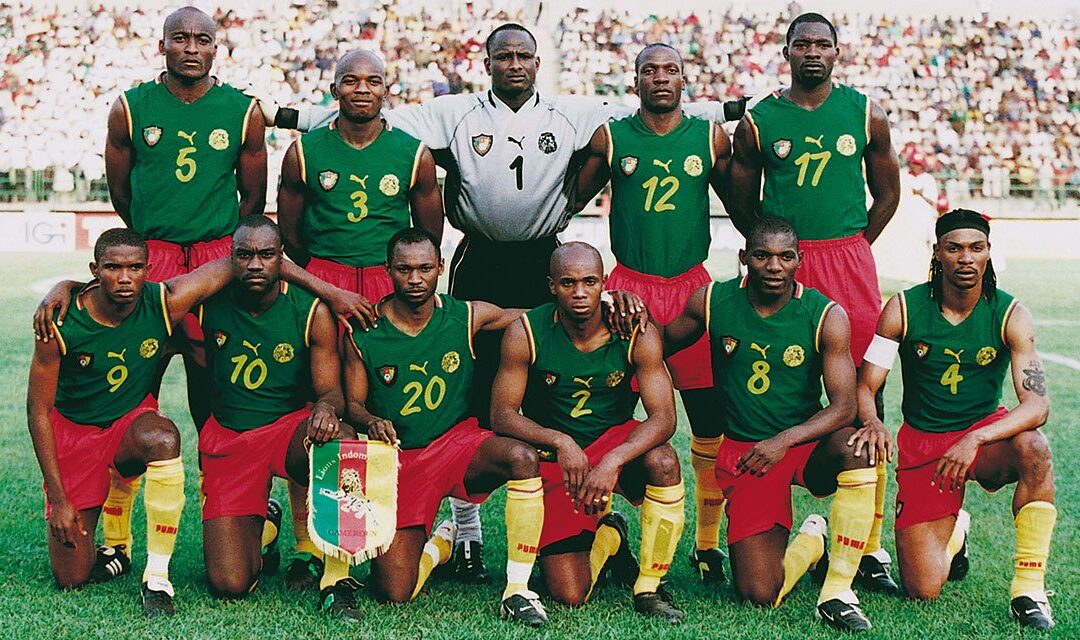The English Premier League (EPL) is the biggest and most-watched football league in the world, harbouring fans from across the globe who all desire to be part of what many consider the pinnacle of club football. With such a vast international audience, fans everywhere look for ways to connect with their teams, and what better way to show your devotion and love for your favourite team than to wear their football shirts, even if you are thousands of miles from the stadium?
It’s likely too far away to come to the football games here, but watching the game on TV, kitted out in all the merchandise, is the next best thing. That shirt isn’t just apparel; it’s a wearable link to the club that crosses borders.
There’s something powerful about imagining a supporter in Brazil donning the same football shirts as another in Australia, both united in spirit with 40,000 fans filling the stadium back in England.
To properly grasp the global reach of football merchandise, I spoke with Sophie Lewis, Retail Store Manager at Nottingham Forest FC, who knows first-hand how overseas fans interact with the club’s merchandise.
“If you live abroad you can’t go to the games, whereas you can access the merchandise,” Sophie said.
NFFC’s top two countries based on international sales were the USA, accounting for 4,500 orders since 1st July 2024, and Australia, with 1,100 orders. These numbers likely reflect the presence of English-born fans who have emigrated, particularly as both countries are popular relocation destinations for UK citizens.
She added: “There’s so many cogs to a football team – merchandise is just one that’s quite visible and accessible to the fans.”
This allows fans of the club to stay connected from anywhere. However, it’s not always about maintaining connections with lifelong supporters, in many cases it’s also about welcoming and engaging with new fans who have only recently discovered their favourite team.
Take Manchester United, for instance. The club operates a megastore in Singapore, appealing to its wide audience of fans in Southeast Asia. The club’s investment in a physical presence highlights how having a strong foundation abroad can adopt loyalty amongst their fans that goes beyond digital engagement.
EPL clubs frequently collaborate with major sportswear brands, such as Adidas and Puma, to design and produce their kits. These companies operate large-scale manufacturing operations in various countries from the likes of Vietnam and China.
This raises an intriguing question: is there any link between the locations of these factories and the emergence of
new international fanbases for English clubs? The short answer is no, although it is hard to measure.
Sophie said: “Where we produce our football shirts and where they’re manufactured really goes under the radar and we don’t really ever publicise where they’re made.
“Ours are made in Thailand and for example, that ranked 28th [based on orders per country].”
This suggests that while production may be happening locally, it doesn’t necessarily translate into increased local support or sales.
Considering that factories often produce textile goods for multiple clubs, it’s unlikely that workers or nearby communities develop a particular interest for a specific club just because they manufacture their kits. Much of the global EPL fandom is driven more by televised exposure, and mass following of star players than by proximity to production.
The EPL has a jaw-dropping 1.87 billion followers worldwide – a testament to its global dominance. With English being one of the most widely spoken languages, it comes as no surprise that a multitude of fans can easily follow on and off pitch commentary, making the league feel inclusive and engaging, regardless of where fans are based.

“It’s an English sport so it’s kind of the home of the sport and the Premier League is top flight, it’s the league that everyone round the globe would want to watch. The 3pm kick off, which is the standard kick off time, you can actually watch those fixtures from anywhere across the globe. It’s morning TV for the US, Mexico, and South America; it’s evening TV for Eastern Europe and Africa; and then night time TV in Asia and Australia, so if you want to watch a Premier League game you can, no matter where you are,” Sophie said.
Now more than ever, players sign on with English teams from all around the world and just this season alone has seen more than sixty nationalities represented. This reinforces the league’s cross-border appeal, as fans constantly back players from their home countries.
“You get the odd player that brings a mass following as well. One that stood out for me was Nicklas Bendtner. I remember when he played for Forest the amount of supporters that followed him, that then supported Forest because of that,” said Sophie.
One creative way Nottingham Forest FC keeps its international fanbase engaged, while also growing its global reach on a small scale, is through targeted merchandise campaigns, such as offering free shipping to specific countries during their national holidays.
These efforts not only show appreciation for overseas supporters but also acknowledge their cultural calendar, helping fans feel more seen by the club.
During Thanksgiving, the club offered free shipping on orders to the USA, encouraging American-based Forest fans to either gift their loved ones a shirt for the occasion or treat themselves to the latest gear.
In turn, football shirts gifted during a holiday might spark interest in someone who wasn’t previously a supporter, providing new opportunities for non-fans to discover the club.
Sophie said: “When you see people wearing the brand it can trigger conversation, I think that definitely brings more fans in.”
Football shirts have the power to connect fans, introduce new ones, and allow a sense of club loyalty to prevail – no matter how far someone is from the stadium. It plays a vital role in a club’s global presence, serving as one of the most accessible and relatively affordable ways for supporters to engage with their team and feel part of the wider football community.



